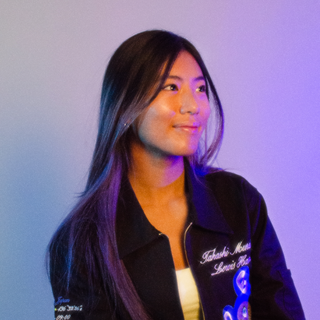You need to hire. We're here to help.
Find and hire top UI Designers, fast.
Get matched to 3 highly-qualified UI Designers in minutes.
Hire Top UI Designers.png)
.png)
.png)
How to hire top UI Designers at Braintrust
Post a job
Create an account and publish your job posting free of charge.
Review candidates
Manage and hire top talent instantly.
Get to work
We simplify onboarding, invoicing, compliance, and more.
Meet our UI Designer community
Braintrust is a user-owned talent platform created by and for the world’s top talent. This includes a talented network of experienced UI Designers available for hire.
Looking for Work

CHRIS COOPER
- Creative Direction
- UX/UI Design
Looking for Work

Sarita Lewis
- Figma
- User Experience
Looking for Work

Stephanie Jung
- Branding
- UI Design
How to hire Top UI Designers

Overview
Hiring a User Interface (UI) designer is a decision that warrants a thorough evaluation of numerous factors. Assessing a candidate's technical skills, creativity, problem-solving abilities, and familiarity with interaction design and information architecture is just the start. Additionally, evaluating their communication skills, passion for user satisfaction, and ability to enhance conversions becomes vital.
The size and phase of your company, be it a startup or a larger corporation, can significantly influence the process to hire UI experts. A startup environment may necessitate a UI designer who can handle multiple responsibilities, work swiftly, and adapt to ambiguity and rapid changes. Their skill set might need to extend to areas such as product design, UX design, and even some front-end development. Conversely, in a larger corporation, roles may be more specialized, allowing the designer to focus primarily on creating a great UI within a comprehensive design and product development team.
The decision between a full-time and hourly or project-based designer also holds significance. If your company has a consistent flow of design services work and requires someone to deeply engage with your brand and projects, a full-time UI designer may be the optimal choice. Such a setup can also encourage better team collaboration and integration. However, for a lighter workload, specific project timelines, or a restricted budget, hiring an hourly or project-based UI designer may be more fitting. They can provide a fresh outlook, increased flexibility, and a user-friendly approach.
Regardless of company size and employment model, expertise in design tools such as Sketch, Adobe XD, and Figma, combined with a solid understanding of front-end languages like HTML, CSS, and JavaScript, is vital. A comprehensive portfolio that showcases a broad range of work, reflects their problem-solving capabilities, understanding of UX principles, and knack for design thinking, is equally important.
Moreover, strong communication skills are paramount for a UI designer, as they will need to succinctly express their designs to various stakeholders, incorporate their feedback, and clarify any FAQs effectively. Familiarity with branding, the ability to interpret a brand's identity into the user interface design, and proficiency in creating an efficient onboarding process are also key elements. Given that the field of UI design continually evolves, an excellent UI designer should be well-versed in the latest design trends, best practices, and social media influences. They should exhibit genuine enthusiasm for crafting intuitive interfaces that improve user satisfaction.
In essence, hiring a UI designer can be an intricate process. However, by contemplating these facets, you can discover a candidate with the necessary skills who aligns with your company culture and can cater to your specific business needs.
Portfolio
When seeking to hire a UI/UX designer, a candidate's portfolio stands as a compelling visual representation of their design skills, showcasing their individual style, creativity, and years of experience. It should encompass a diverse range of UI and UX designs, emphasizing their versatility in designing for various users and platforms, including web design and mobile app design. Look for evidence of their design process: from initial mockups and wireframes to polished, final designs. Case studies are crucial, explaining the problem each design solution was meant to solve, the approach taken, challenges faced, and the impact on the end user. A UI designer job requires proficiency in design software like Sketch, Adobe XD, and Figma, and experience with prototyping tools like InVision or Marvel. Candidates should also be familiar with design systems, grid structures, and creating engaging animations.
Understanding of User Experience (UX)
While UI focuses on visual design aspects, UX emphasizes the overall user experience design. A good UI/UX designer must comprehend UX principles to create interfaces that balance aesthetics with functionality. They should exhibit knowledge of user research methods, persona creation, user flows, user journey, and journey maps. These design skills demonstrate their ability to design with the user's needs and behaviors in mind. Furthermore, they need an understanding of usability testing and the ability to incorporate user feedback into their design solutions.
Technical Skills
Although a UI/UX designer doesn't necessarily need to code, a basic understanding of front-end languages such as HTML, CSS, and JavaScript is a significant advantage. This knowledge allows them to design with realistic expectations of what can be technically achieved, reducing the gap between the design and web development phases. They also need to be proficient with version control tools and collaboration platforms like GitHub or Bitbucket, enabling efficient work within a design team.
Problem-solving Ability
The primary function of a UI/UX designer is to solve problems. Faced with a user need or business requirement, they must create a design that effectively addresses these issues. Their ability to think critically, ask the right questions, and approach problems from different angles is key. In a job posting, you might ask candidates about a complex design project they've handled in the past, revealing their thought process, how they identified and tested potential solutions, and how they responded to challenges or setbacks.
Communication Skills
For a UI/UX designer, clear communication is paramount. They need to explain their design decisions and thought processes convincingly to team members, stakeholders, and even users. Proficiency in presentation and documentation tools like Microsoft PowerPoint or Google Slides, and design handoff tools such as Zeplin or Avocode, is a must. An understanding of project management and collaboration tools like Jira, Trello, or Slack can be beneficial for efficient coordination and communication within a team.
Understanding of Branding
Branding extends beyond just a logo or color palette—it represents the company's identity. A proficient UI/UX designer should reflect the brand identity in their designs. They need to understand the target audience, brand values, visual identity, and tone of voice, translating them into the user interface. Proficiency in graphic design software like Adobe Illustrator or Photoshop can be beneficial for creating or editing brand assets.
Knowledge of Current Design Trends and Best Practices
The field of UI/UX design is ever-evolving, and a good designer should stay updated with the latest design trends, methodologies, and technologies. They should know how to apply these trends without compromising usability or deviating from the brand's identity. Knowledge of best practices in areas like accessibility, mobile app design, and responsive design is essential. They should also be aware of guidelines for different operating systems like iOS and Android, highlighting the importance of continuous learning.
Passion for Design and User Satisfaction
A passionate UI/UX designer deeply cares about creating beautiful, intuitive interfaces that enhance user satisfaction and achieve business goals. They should show an interest in understanding users' needs, behavior, and feedback, and use that understanding to create designs that provide a positive user experience. Their participation in the design community and their eagerness to take on new challenges and solve problems often reflect their passion.
Expert Resources for Hiring UI Designers
Frequently Asked Questions
How do I become a UI designer?
Becoming a UI designer involves a combination of education, skill development, and practical experience. You should start by learning the fundamental principles of design, color theory, typography, and visual communication. This could be through formal education, online courses, or self-study. You'll also need to learn to use design tools like Sketch, Adobe XD, or Figma. Once you have a grasp on these, you should start building a portfolio, which is crucial for showcasing your skills and landing a job. You could create mock projects, contribute to open-source projects, or do freelance work. Joining design communities online can also be beneficial for feedback and networking. Lastly, staying updated with the latest trends in UI design and continually improving your skills is key in this ever-evolving field.
Does a UI designer need to code?
A UI designer doesn't necessarily need to be a coder, but having a basic understanding of front-end languages like HTML, CSS, and JavaScript can be very beneficial. This knowledge can help them understand the technical possibilities and limitations of their designs, improving communication between them and the development team. This can result in more efficient collaboration and smoother transition from design to development. However, it's not a strict requirement, and many successful UI designers don't code.
Is UI front end or backend?
User Interface (UI) design is predominantly related to the front end of a digital product. It's about designing the visual elements that users interact with on a website, application, or digital platform. These elements include colors, typography, buttons, menus, forms, and more. While UI designers may need to understand how their designs will be implemented by front-end developers, they don't typically delve into backend development, which involves server-side operations, databases, and application logic.
What language is used for UI?
While UI design is primarily about visual elements, understanding certain languages can be beneficial. HTML (HyperText Markup Language) is used to structure content on the web, CSS (Cascading Style Sheets) is used for styling and layout, and JavaScript enables interactivity. UI designers also use a variety of software and tools for creating and prototyping designs. These include vector graphics editors (like Adobe Illustrator), wireframing tools (like Balsamiq), and UI design and prototyping tools (like Sketch, Adobe XD, or Figma). However, the actual design work doesn't typically involve coding, unless the designer also works on the front-end development.
How much does it cost to hire a UI Designer?
The cost of hiring a UI designer can vary greatly depending on the designer's level of experience, the complexity of the project, and the geographical location. A full-time, entry-level UI designer in the United States might earn anywhere from $50,000 to $70,000 per year, while a senior designer or lead could earn over $100,000. Remember that costs can be significantly different in other regions and countries. In addition to salary, there could be other costs like benefits, bonuses, and training.
Where can I hire a UI Designer?
There are various platforms where you can hire a UI designer. Websites like LinkedIn, Glassdoor, and Indeed are popular for full-time roles. For freelance or contract work, you could use platforms like Upwork, Freelancer, or Toptal. You can also find designers on design-specific platforms like Dribbble or Behance. Additionally, reaching out to your network or attending local design events or meetups can also help in finding potential candidates.
How do I recruit a UI Designer?
To recruit a UI designer, start by creating a comprehensive job description that clearly outlines the role, responsibilities, skills required, and the nature of projects they'll be working on. Once the job is posted on relevant platforms, review applications and portfolios to assess candidates' technical skills, creativity, and problem-solving abilities. Then, conduct interviews to understand their design process, communication skills, and culture fit. You might also consider giving a design test or assignment to see their skills in action.
How much does a UI Designer charge per hour?
The hourly rate of a UI designer can vary widely based on their experience, expertise, and location. A freelance UI designer in the United States might charge anywhere from $50 to $200 per hour. However, rates could be lower in other countries or for less experienced designers. Remember that the hourly rate should not be the sole factor in your decision. The designer's portfolio, understanding of your project, and communication skills are also critical to consider.
Get matched with Top UI Designers instantly 🥳
Hire Top UI Designers


.webp)

.webp)



.png)